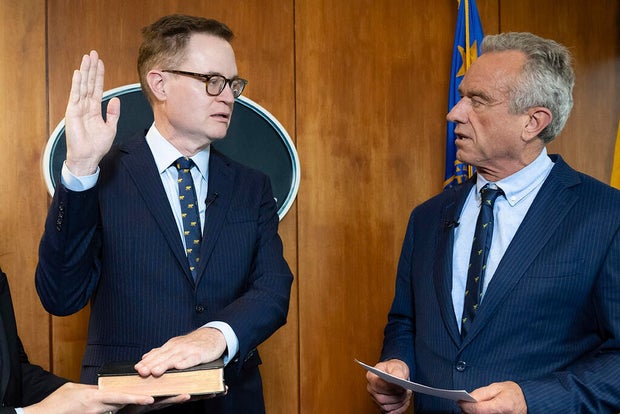The Centers for Disease Control and Prevention is at a crossroads. Last week, CDC Director Susan Monarez was ousted less than a month into her tenure after resisting Secretary Robert F. Kennedy Jr.’s push to align with his vaccine policy agenda. Within hours, three senior leaders — including the chief medical officer and the heads of vaccine safety and respiratory infections — resigned in protest. Their exits capped weeks of mounting tension: biased scientific reviews, the withdrawal of key documents, and a shooting at CDC headquarters tied to COVID misinformation. Hundreds of staff publicly applauded the departing scientists in a rare “clap-out.”
Into that vacuum stepped Jim O’Neill, deputy secretary of Health and Human Services, now installed as acting CDC director.
O’Neill’s résumé breaks sharply with CDC tradition. A Bush-era HHS official turned Silicon Valley investor, he is neither a physician nor a scientist — an unusual profile for the agency’s top post. He is expected to retain his deputy role at HHS while leading the CDC. After his early government service, O’Neill spent nearly two decades in close partnership with billionaire Peter Thiel, managing his funds, directing the Thiel Foundation, and co-founding the Thiel Fellowship. He also led the SENS Research Foundation, a nonprofit focused on anti-aging science. In June, he returned to Washington as deputy secretary; he now holds that position alongside his role as CDC director.
Department of Health and Human Services via AP
Former colleagues on both sides of the aisle describe him as smart and diligent, with a deep knowledge of HHS mechanics. They also note his libertarian streak, which could align him well with Secretary Kennedy but set him at odds with school vaccination requirements. His most controversial stance, voiced in 2014, was that the FDA should approve drugs once proven safe, leaving effectiveness to be determined in the marketplace — a proposal widely criticized by public health experts as dangerous.
O’Neill insists he is “very strongly pro-vaccine,” but his recent post on social media — asking if “omicron is the best vaccine” and suggesting CDC could “redefine the word vaccine at will” — sparked new concerns about his grasp of vaccine science. Experts counter that infection is not the same as vaccination, which confers protection without the risks of acute illness or long COVID.
He could wear both hats for some time. The White House and Kennedy appear eager to avoid a bruising Senate confirmation fight. Until COVID, the CDC director was not a Senate-confirmed position; Republicans changed that in the pandemic’s aftermath. Leaving O’Neill in an “acting” role could paralyze major decision-making at the agency for the foreseeable future.
Meanwhile, the CDC’s vaccine advisory committee — made up of all new Kennedy appointees — is preparing for a pivotal September meeting. On the agenda: the newborn hepatitis B dose, infant RSV protection, COVID vaccination for healthy children and young adults, and the combined measles-mumps-rubella-varicella shot. Revisiting so many long-standing childhood immunizations at once would be unprecedented. If recommendations are weakened, Medicaid, the Children’s Health Insurance Program and the Vaccines for Children program could restrict coverage, creating new barriers for families.
The stakes for CDC are profound. O’Neill has promised to “refocus CDC on infectious disease” and “restore trust,” yet staff and state partners say politicized decisions and budget cuts are already eroding core work.
The September vaccine advisory meeting will be the first real test for O’Neill. If he restores scientific processes, including transparent reviews, expert briefings, and evidence being vetted and posted before votes, CDC insiders say he could stabilize morale at the agency and preserve the credibility of its scientifically-based recommendations. If not, the resignations of senior scientists may prove the start of a broader exodus, leaving states and families without clear guidance just as flu, RSV and COVID converge this fall.
Source link

